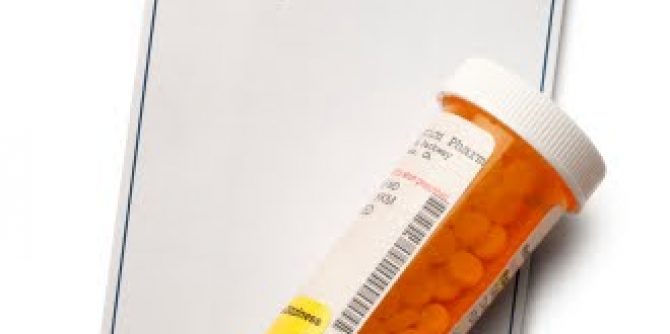As a mail-order pharmacy service rep, I’ve learned a lot that I’d like to share. The following are some things I wish I could tell my patients, but am not always able to. I’ll spare you my complete feelings about the act of profiting, by charging people ridiculous amounts of money, for life saving medications.
Don’t get me wrong—there should be a fee, but, it should be affordable, like over the counter meds. People shouldn’t go broke, or die, because they can’t afford meds. There was a time, long ago, when medicines were created solely to help people, not to profit from them. In any case, here are some things to help you, have as easy a time as possible, dealing with your pharmacy:
1. No one cares about your medication more than you. If you’re expecting meds in the mail, but haven’t heard anything about it, call your pharmacy! I’ve encountered many patients that are waiting for medications for days, even weeks. Stay on top of it. You are your biggest advocate.
2. See about copay assistance programs. Check with the manufacturer of your medication, your pharmacy, your doctor, or look online, to find out if there are any copay assistance programs available for your medication. And don’t automatically assume you don’t qualify. Now, this one is something pharmacies push, because if it’s more affordable, you’re more likely to buy your meds. Also, always ask for generic if your doctor allows it.
3. Pay attention to your drug formulary. Drugs can change status from preferred to non-preferred, causing a huge increase in costs.
4. Some meds are only available by mail. Your local pharmacy, for any number of reasons, may not carry certain meds. Be sure to verify this with your insurance to avoid delays in your therapy.
5. Some meds are available at your local pharmacy, for a limited time, until your insurance increases your copay. They do this because it’s more cost effective for some drugs to be sent by mail-order, verses, being stored at a local pharmacy. This is no secret, but it’s something that’s not well understood by everyone. For example: you can go in May to fill your birth control at your local pharm for $20, but then try to refill in June, and it’s $50. That could be because you must start getting it by mail.
6. The customer service rep does not run the company. Often times, these overworked, underpaid reps, are also frustrated by company policies. The people responsible for making decisions about how your meds are handled, will never speak to you. So if you are frustrated with policies, or the handling of your medications, etc… ask to speak to a supervisor. If you have a complaint, WRITE THE COMPANY! Send a certified letter for confirmation of receipt. Email works too, but can be “accidently” deleted. I say do both. This, of course, can go for, any customer service situation. Also, let your insurance company, and your HR department, know about issues you’re having.
7. Verify your pharmacy’s refill policy. Some pharmacies call their patients, some don’t. If you’re taking a maintenance medication, stay on top of it! You are one of many, and can slip through the cracks. It’s not the pharmacy’s intention to have that happen, but they’re processing thousands of prescriptions a day, someone’s bound to get lost, and you don’t want it to be you.
8. Make sure you have refills left. Verify—by phone, not on line—the amount of refills you have and the dates that it’s valid. The life of a prescription is one year. That doesn’t necessarily mean you have a year’s worth of refills, but it does mean you have an expiration date, and if you’re past that date, then you need a new prescription.
9. Call at least a week before you need your meds. Just because the shipments may be overnighted, doesn’t mean you want to call Monday for Tuesday delivery. Your prescription needs to process amongst thousands of others. Processing sometimes includes, contacting your doctor’s office, verifying insurance, processing prior authorizations, and so on.
10. Check with your insurance or pharmacy about getting a 90 day supply. Keep in mind, some insurance companies will allow you a 90 day supply only after you’ve met a certain minimum supply. For instance; you may need to get three, thirty day supplies consecutively, before you can get a full 90 day supply.
11. If your med is administered at your doctor’s office, make sure they have it on hand before you go. Just because they made an appointment with you, doesn’t mean they have your drug. I can’t tell you the number of times that patients call, upset, after going all the way to their doctor’s, just to find out their drug wasn’t there. I’d like to yell at them, “Why didn’t you make sure they had the drug before you went!” Also, make sure your doctor isn’t using someone else’s drug on you, or using your drug on someone else. For example: If you and another patient both use Gamunex, and the doctor’s office stores the med for the both of you; the medication that has your name on it, should not be used for another patient, and medication with someone else’s name on it, should not be used for you. That is illegal.
TERM YOU SHOULD KNOW– Prior Authorization/Pre-certification/Coverage Review – there may be some other names, as they may vary by insurance. It’s basically a list of questions your insurance wants your doctor to answer to verify the necessity of a medication and/or procedure. For medications, in some cases, you just need one for the pharmacy to provide the medication. In other cases, say for injectables, you may need one for the pharmacy to provide it, and another for the doctor to administer it.


